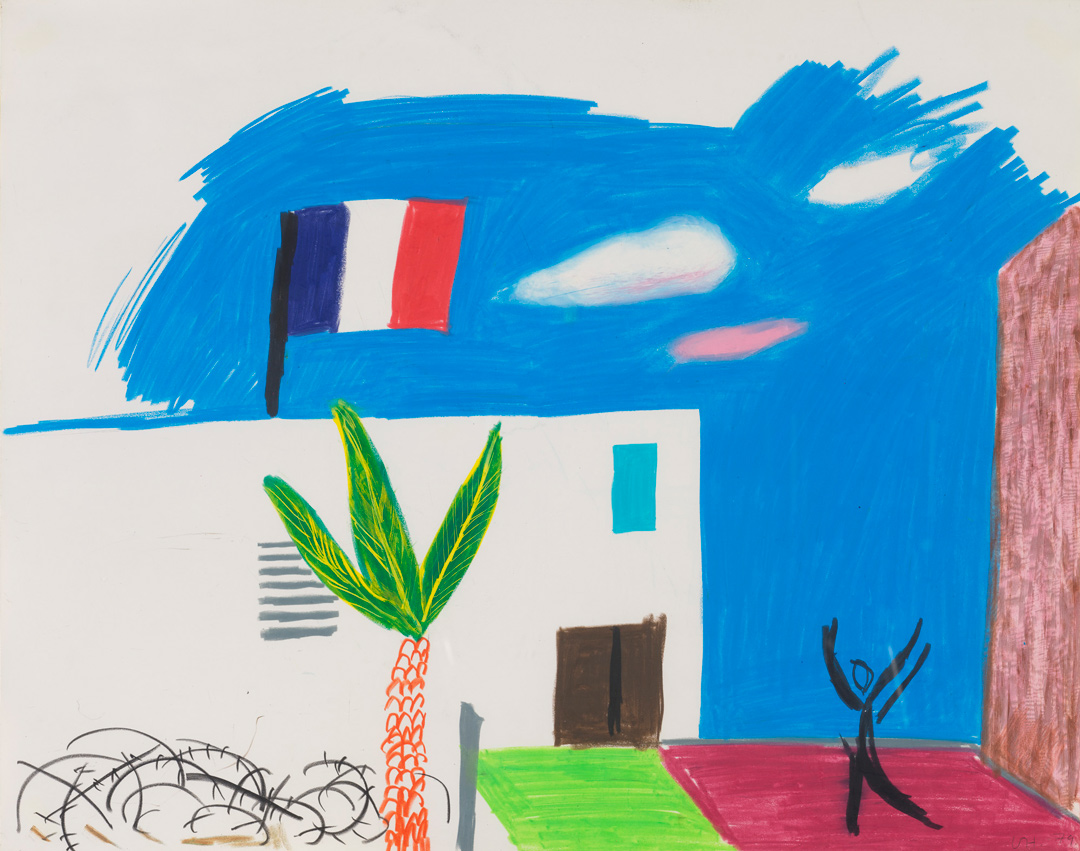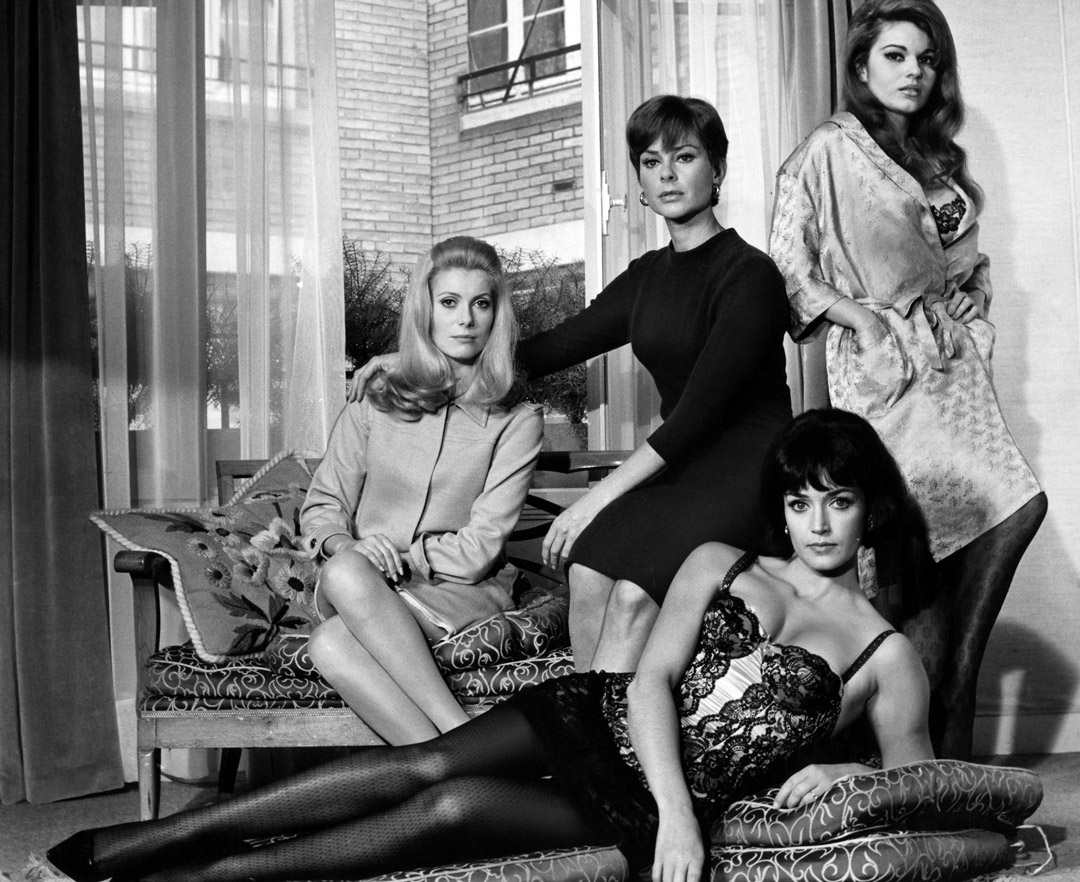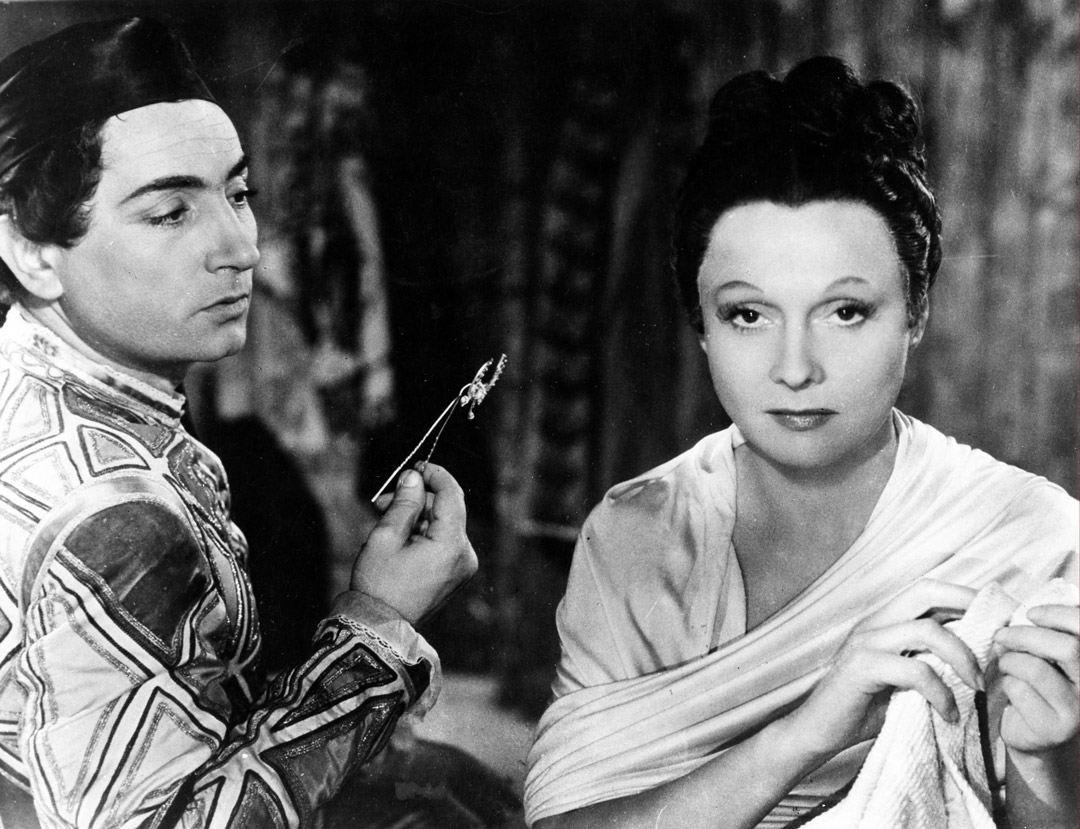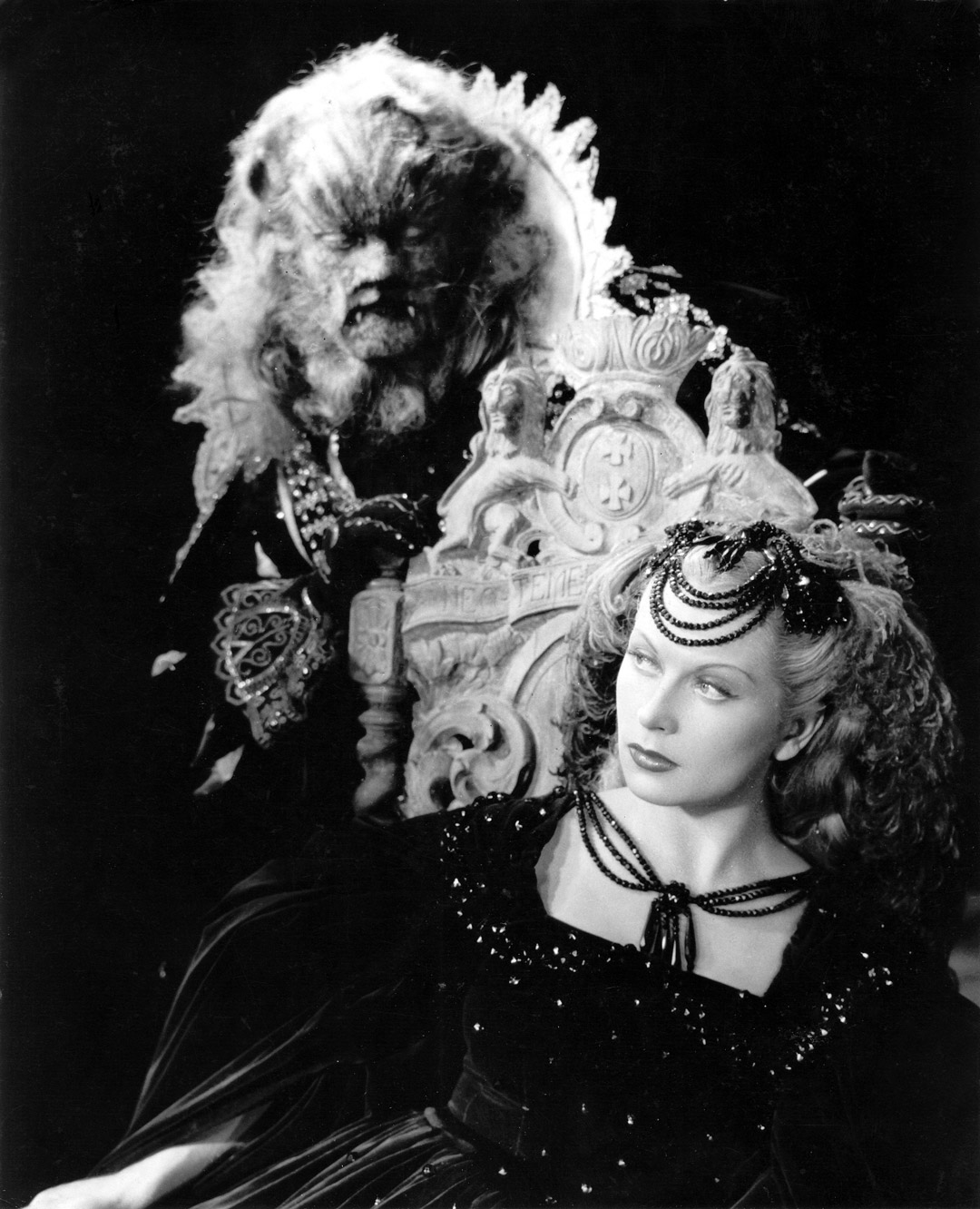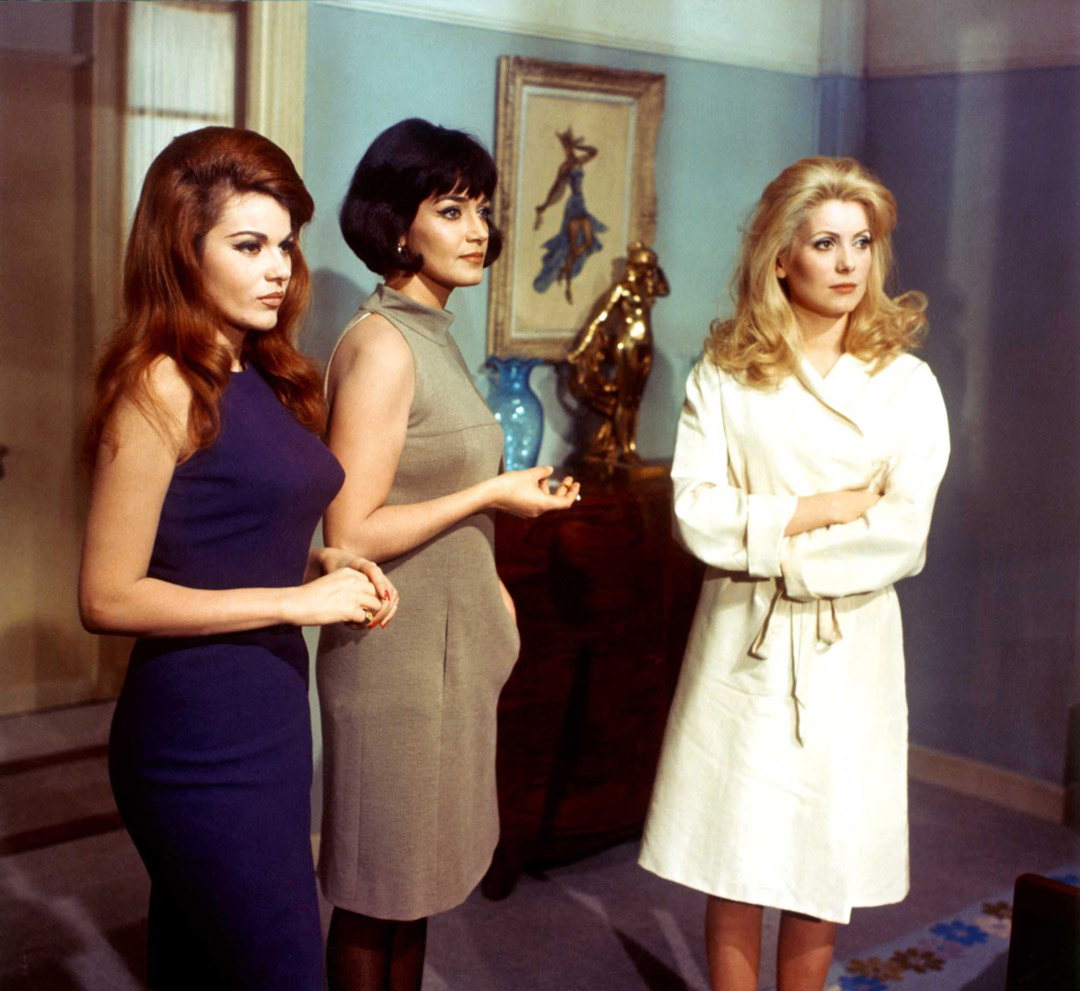Object of the Week: Ideas for Zanzibar with Dancer from Parade Triple Bill
A pioneering Pop artist, David Hockney has throughout his career pivoted effortlessly from medium to medium, continuously exploring his visual style. Though perhaps best known for his iconic paintings of Southern California swimming pools, Hockney has produced a much larger body of work, ranging from abstract paintings to photo collages to iPhone drawings. However, arguably lesser known is his work in stage and costume design: he has been involved in productions of Stravinsky’s Rake’s Progress and Mozart’s Magic Flute, both at the Glyndebourne Opera in England, and Parade at the New York Metropolitan Opera, for which this drawing was created.
Grouped under the title Parade, the Met Opera’s 1981 triple bill brought together three pieces: Parade, a ballet written by Jean Cocteau with music by Erik Satie; Les Mamelles de Tiresias, an opera with libretto by Guillaume Apollinaire and music by Francis Poulenc; and L’Enfant et Les Sortileges, an opera with libretto by Colette and music by Maurice Ravel. Hockney designed the sets and costumes for all three performances.
Satie’s Parade, first presented at the Théâtre du Châtelet in Paris on May 18, 1917—during the height of World War I—takes place in a world of circus acts and street fairs. Though written in 1903, Les Mamelles de Tiresias similarly premiered during the war, in June 1917. The surrealist play was described by one critic as “high-spirited topsy-turveydom” whose deeper themes are about the need to repopulate a France ravaged by war.¹ Lastly, L’Enfant et Les Sortileges, commissioned in 1915, is a “fairy ballet” exploring the inner emotional world of a child, where toys and animals come to life.
There is a long history of artists collaborating on theater and dance productions. Merce Cunningham frequently collaborated with Jasper Johns and Robert Rauschenberg, for example, and both the scenery and costumes for Satie’s original Parade were designed by none other than Pablo Picasso. For New York Times theater critic John Russell, Hockney’s designs for the 1981 presentation Parade are “not [Picasso’s] Parade redone from scratch. It is the Parade of 1917 revisited as if in a dream, with Picasso very much in mind, both as the original designer and as the poet of Les Saltimbanques—the tumblers and harlequins who turn up over and over again in the work of Picasso’s Rose period.”²
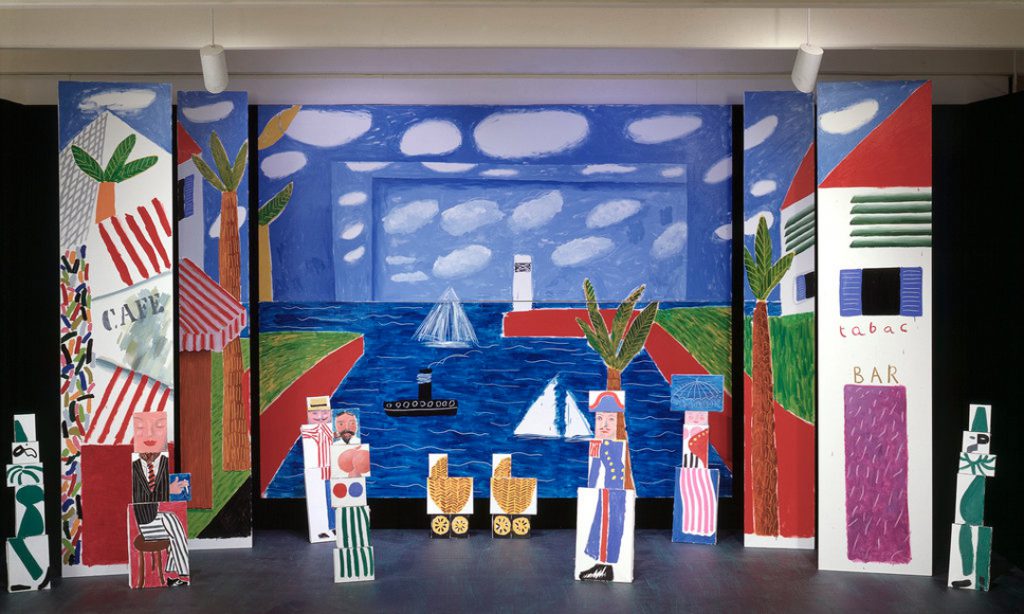
Hockney produced many drawings for Parade, but the one in SAM’s collection is for the second opera in particular: Les Mamelles de Tiresias, set in Zanzibar, an imaginary town in France. Taking into account the circumstances surrounding the opera’s 1917 premiere, when the war was at its worst, Hockney incorporated details such as gas masks, helmets, searchlights, and barbed wire, the latter of which is included in this drawing.³ Though the unfinished blue sky suggests a certain incompleteness, it is important to keep in mind that this is, after all, a preparatory drawing. And despite the war-time setting, Hockney still manages to bring his bold, graphic, and colorful style to the mise en scène. In the image above, which more fully depicts Hockney’s playful cubist-inspired world, we get a sense of how such drawings were crucial for his development of these operatic worlds.
–Elisabeth Smith, Collections Coordinator
